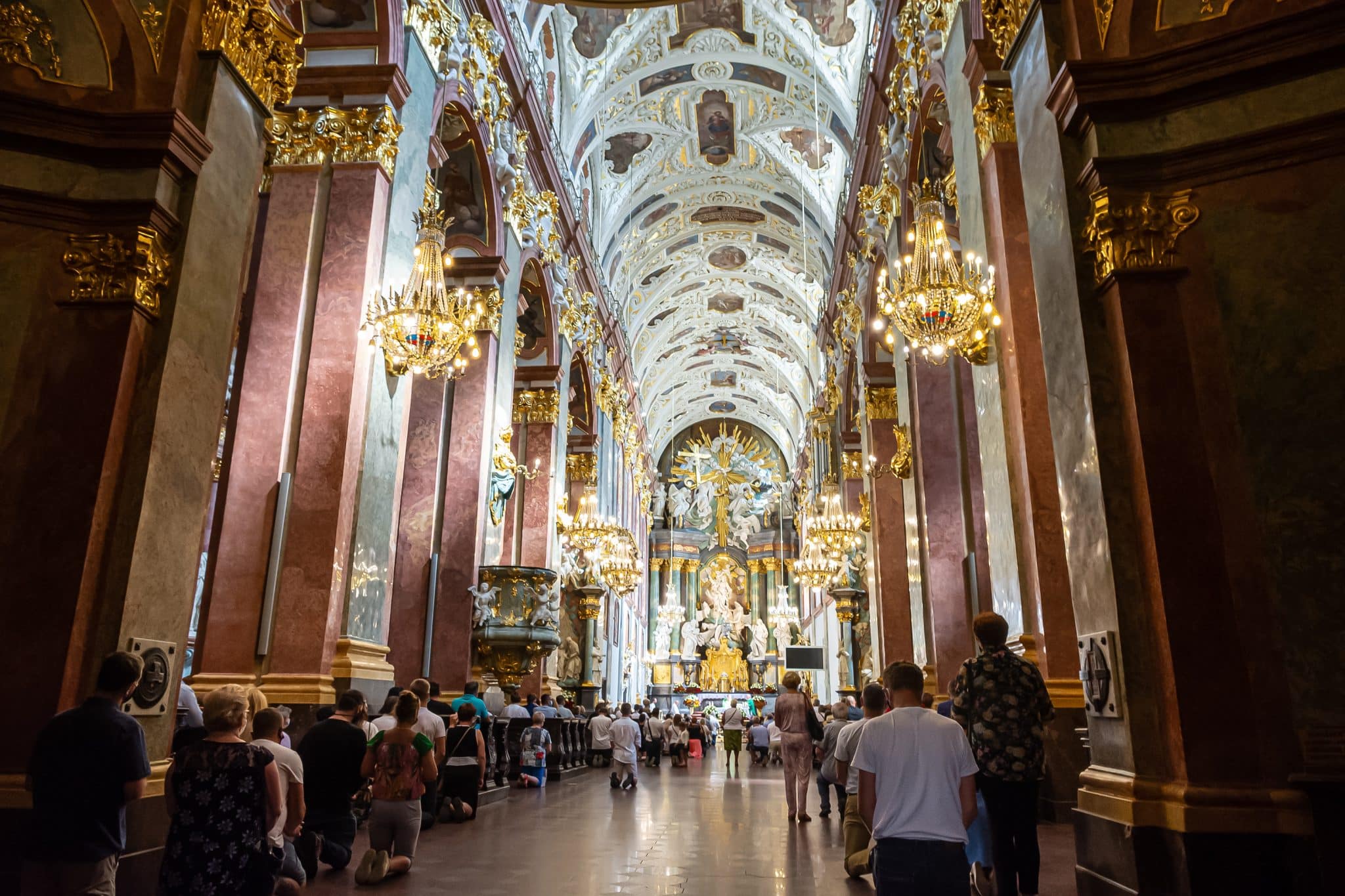Catholic Mass in Poland is not only a religious ritual but also a reflection of the nation’s history, culture, and identity, shaped by centuries in which Catholicism anchored Polish society through partitions, war, and communism. Today, around one-third of Poles attend Mass weekly and 71% identify as Catholic, making Poland one of Europe’s most religious countries. The liturgy follows the universal Roman Catholic rite, making the service immediately familiar to visiting Catholics; it can be both good way to experience Polish culture and find a slice of home abroad.
Below are the experiences of two SRAS student who attended Mass in Poland while on SRAS study abroad programs in Warsaw.
Attending Catholic Mass in Warsaw, Poland – 2017
By SRAS Student Regan Bortz
Before I ventured over “The Pond” to Europe, I made a promise to my mom that I would go to at least one service in a Catholic Church while I was there. Keeping my promise, I traveled to the Warsaw Old Town where it seemed like my choices of services were plenty on a Sunday afternoon. Being the summer season, it seemed that so many more tourists made their way to Warsaw to experience the beauty it has to offer. That being said, Old Town was packed with a buzz that didn’t quite match the mood I channeled to appropriately go to Mass that morning. I choose a church on the edge of Old Town to avoid the crowds. Holy Cross Church, at ul. Krakowskie Przedmieście 3, seemed big enough that a non-native speaker might be able to blend in, but small enough that I would feel the intimacy of the congregation.
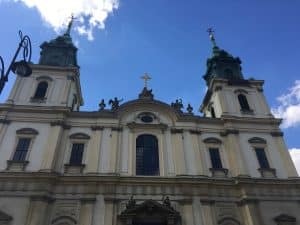
I discovered quickly that just like everything else the Poles do, Polish Catholic was quite different than the Catholic I was born and raised to be. Because this church was on the populated street leading into Old Town, and the church itself a sight to see with ceiling paintings, gold statues of all the biblical heroes, and the vintage sense of the wooden pews, visitors were common. Walking into the church, you get a feel for a church that was built to replicate a church from the 19th century. The pews were in the true center of the church, roped off from the side walls that attracted the visitors with gold statues, beautiful paintings, and memorial plaques for previous religious leaders. It was quite strange to me that something as holy as Sunday morning Mass was commercialized by tourists in inappropriate church dress, taking pictures of the church while the priest was in the middle of his homily.
The comforting part about the Catholic religion is that no matter where you are in the world, it follows the same proceedings. It was easy to recognize when the congregation was reciting the Nicene Creed, although it was difficult to remember how it is said in English when everyone else is reciting it in Polish. It was easy to shake hands with the people around me and exchange words and hopes of peace for each other. It was easy to know to genuflect before I got to my pew as a sign of respect. Overall, putting my 21 years of experience of Catholicism into practice 5,000 miles away from my home was easy.
I chose not to take communion at this Mass, which was strange for me, as I have exercised my privilege to receive the Eucharist every time I’ve attended Mass since receiving the Sacrament of First Communion when I was eight years old. But I made this decision for many reasons. The first reason was even though I put on a nice sundress with a cover and my nicest sandals (something I would wear for Easter Sunday back home), a sign in front of the entrance to the pews had a huge red ‘X’ over a picture of sandals. I understand fully the concept of “Sunday’s Best”, however my other appropriate option for footwear would have been my heels. As much as I would have loved to fit in with the rest of the crowd that Sunday afternoon with acceptable footwear, the thought of heels walking about a mile on cobblestone streets brought me back to reality. The second reason I did not take Communion was because the Poles are sacrosanct about the act of Reconciliation, or Confession, before receiving the Body of Christ, and I had not met that requirement. I wanted to respect the Polish Catholic Church and all their traditions.
I am happy that I experienced this. I have learned that traditions may vary in different regions of the world, but the main proceedings of the Catholic Mass are a strange comfort of normalcy in a strange country. It showed me how differently casual church is at home, where I can go wearing whatever shoes I select. Plus, in my small, hometown Catholic Church, I am sure we would never have an added audience of tourists!
Attending Midnight Christmas Mass in Poland – 2020
By SRAS Student Eric Nesbitt
The major religion practiced in Poland is Catholicism, so it is quite easy to find a Catholic Church celebrating mass in Warsaw. Taking a walk down the city’s central Nowy Swiat Street, you will see several, and the easiest way to check mass times is to just walk in and look at the bulletin board located at the back of the church. Alternatively, you can hop onto google and check out churches in Warsaw and look for masses held in English.
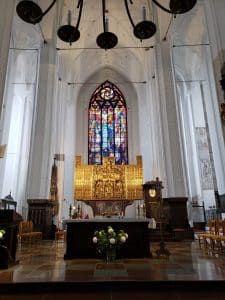
I found only one conveniently located church with a mass in English at St. Paul’s Catholic Parish at Solidarmosci, 80.
There were plenty more, however, that offered Christmas or regular weekly masses in Polish. Masses held in Polish are still beautiful and can be great language practice. Masses are celebrated in the exact order and style as they are in the U.S. Going to a mass was a great way to fight off feelings of home sickness; it would bring me right back to going to church with my family in the United States.
– Dos and Don’ts
Always be respectful in churches. Keep a level of reverent silence while visiting; you do not want to disturb those worshipping or praying.
Dress appropriately. In winter this is not usually an issue but make sure to cover your knees and avoid clothing that is too revealing.
When taking photos, be discreet, especially if a mass is in service.
In a Catholic mass, bring your coat, gloves, and hats, and expect to wear them. In all of the churches and masses I went to, the Poles in attendance often left their coats, gloves, and even hats on during the mass. The churches are very large and heating them is very expensive, so they remain fairly chilly in the winter months.
Go! Even if you are not a practicing Catholic or even if it has been years since you have gone to church, make it a bucket list item while you are abroad to go once. Religion is a major component of Polish culture; go and experience it and I guarantee it will be one of the most impactful cultural experiences had while on study abroad here.
– Christmas Eve Mass
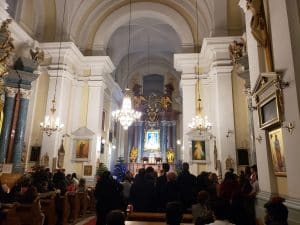
St. Paul’s English-speaking mass was listed for 10pm on Christmas Eve. My brother flew over from the US and was visiting me over winter break, so I went with him, my girlfriend, and another friend and his family. We took tram number 18 for three stops down Marszalkowska from my apartment in the city center and then walked the remaining five minutes to arrive at the church. We arrived 15 minutes before the mass started and the pews were about half full; by the time mass began, there was standing room only.
The congregation was a mix of multiple ethnicities, all brought together by the celebration of Christmas Eve Mass, forming one community. The pastor spoke perfect English and was most likely from America given his accent. The mass was quite similar to how Christmas Eve Mass is celebrated back home but there were fewer hymns sung in Warsaw. Mass concluded and a festive spirit could be felt in the church. We wished those around us a Merry Christmas and said our goodbyes. We saw several other students from the university in attendance, and it was nice to greet them and wish them happy holidays as well. After, we returned home and had some holiday desserts and opened the presents we had gotten for each other. While it was different from Christmas back home in the United States, great memories were made that will never be forgotten.
Spending time abroad is an excellent opportunity to dive into the many facets of a different culture, religion being one of the biggest. Christmas time away from home is always tough but going to a Catholic mass can make you feel right back at home during the holidays. I suggest while on study abroad to go to Christmas mass or any mass to see how Poles practice their main religion.
You’ll Also Love
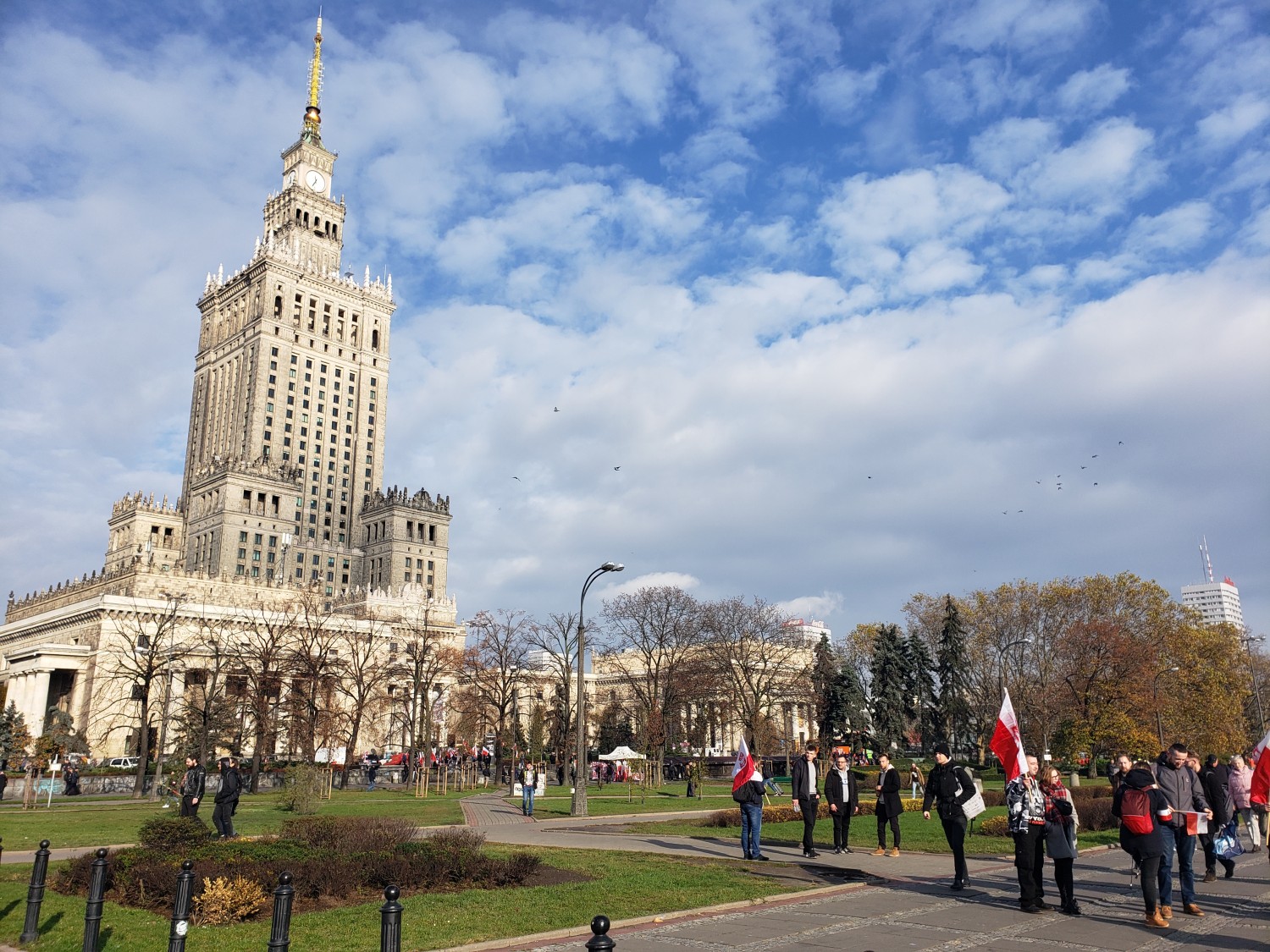
Polish Independence Day: Student Observations
Independence Day is celebrated in Poland on November 11th. Polish Independence Day commemorates the re-establishment of the state of Poland at the end of World War I in 1918. The holiday was abolished by the communists, but was instituted in 1989, after the fall of communism. Celebrations across the country include firework displays, concerts, and […]
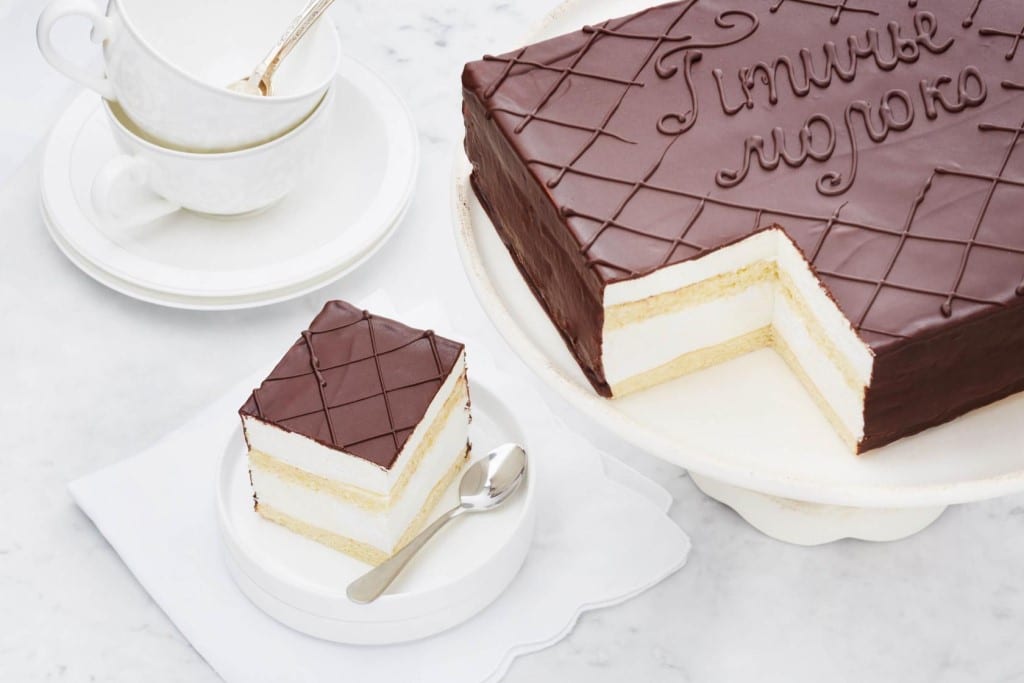
Bird’s Milk Cake: An Airy Russian Cake as Unusual as Its Name
Like the soft, meringue-filled candy on which it was based, bird’s milk cake (торт «Птичье молоко») consists mostly of filling. Thick but exceptionally airy layers of soufflé are separated by thin, fluffy slabs of cake, and the whole confection is covered in chocolate glaze. The cake’s fantastical name, connoting rare and wonderful luxury, is fitting. […]

Pączki domowe: Polish Fat Thursday Donuts
“Pączki domowe” (pronounced pOHNch-kee, the singular form being pączek) are pastries similar to donuts. They are considered traditionally Polish, although they are enjoyed across Europe, in many places in North America, and beyond. They are deep-fried and filled with confiture or other sweet and/or creamy fillings, and are usually topped with a sweet icing, glaze, […]
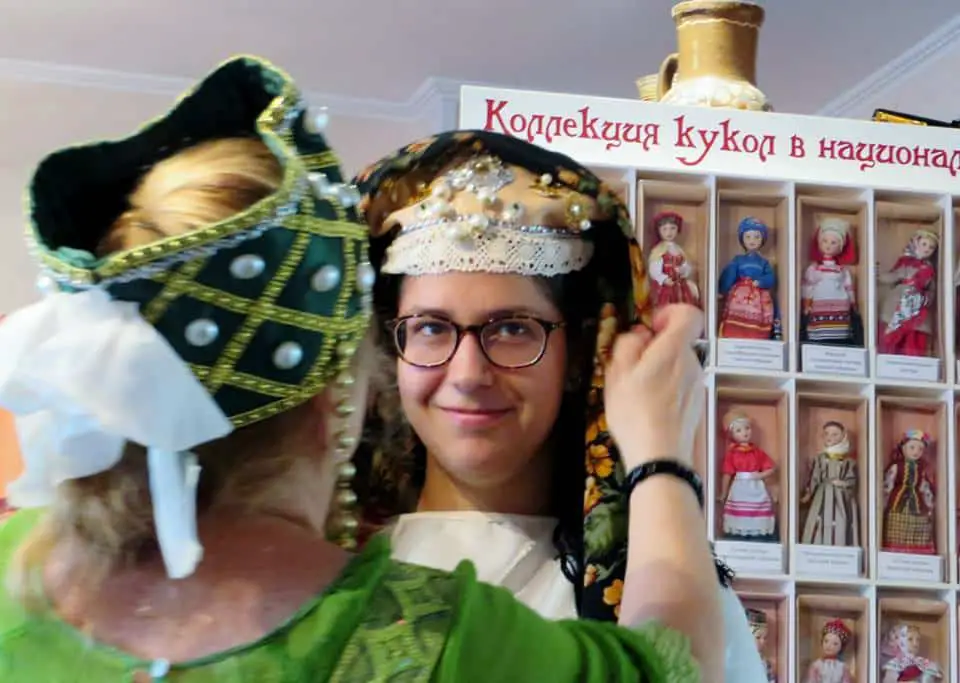
Study Abroad and the Identity of American Students of Russian
Many American students of the Russian language take part in study abroad programs in such Russian-speaking countries such as Moldova, Kazakhstan, Kyrgyzstan, Latvia, and Lithuania, to name a few. Kinginger (2009, p. 11) defines study abroad as “a temporary sojourn of pre-defined duration, undertaken for educational purposes.” After entering a new country and culture, these […]
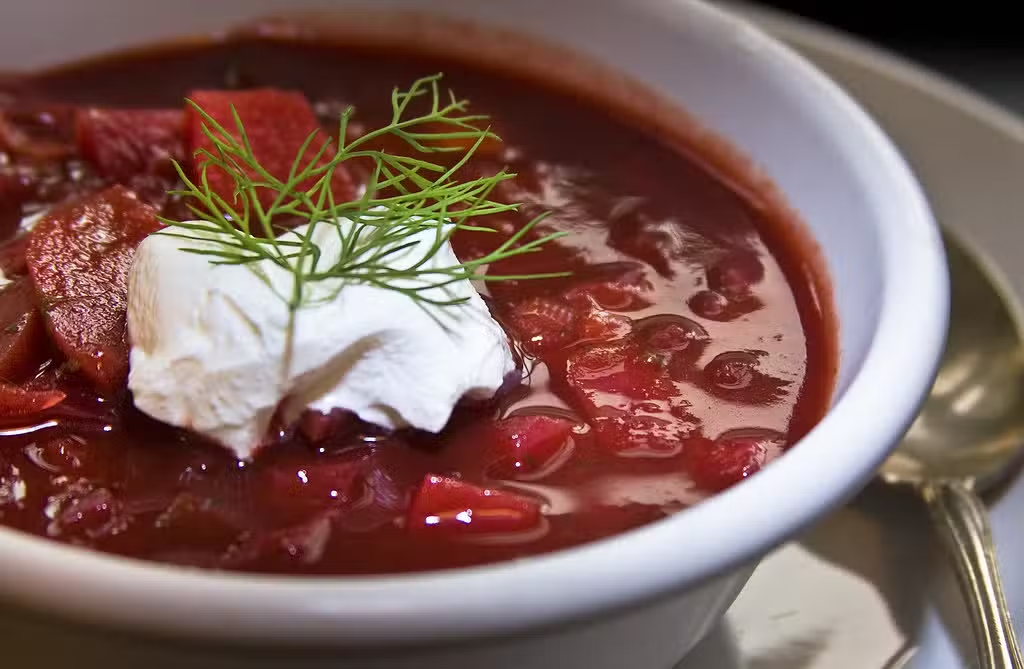
Borsch: The Slavic Signature Soup
Borsch (Борщ) is one of the most popular soups in Central and Eastern Europe and Northern Asia. It is sweet and sour, healthy and can be eaten at any time of year. It has a complicated and very long history, with the soup changing over time within various geographic regions. Today, the broadly recognized “standard” borsch […]

